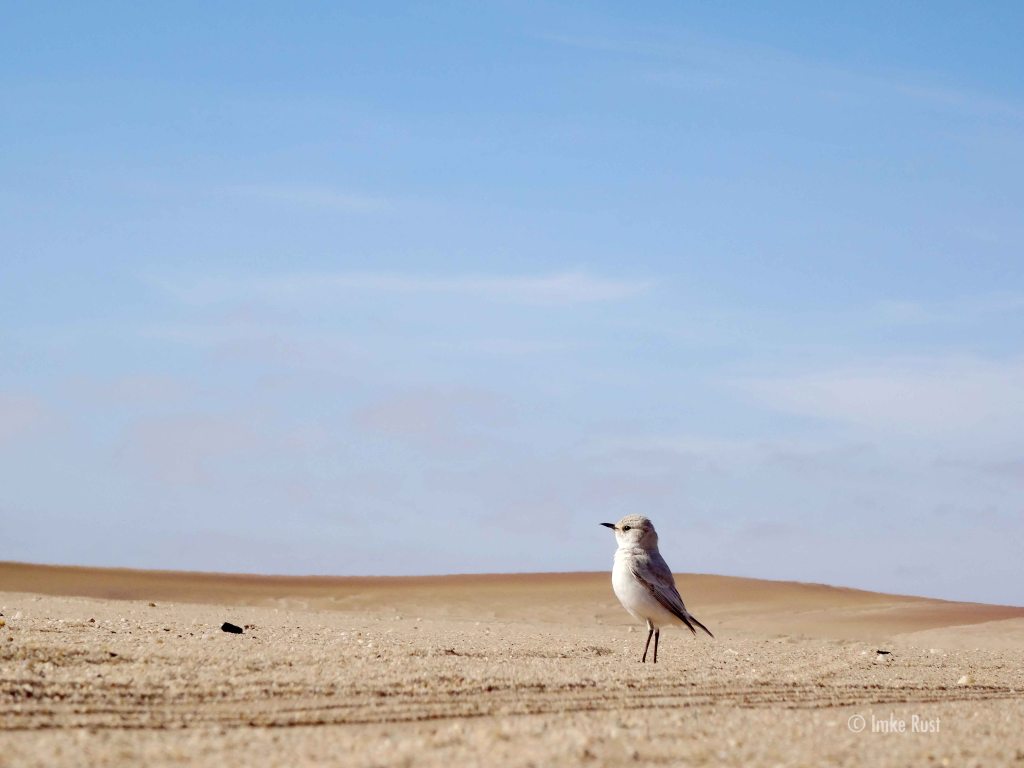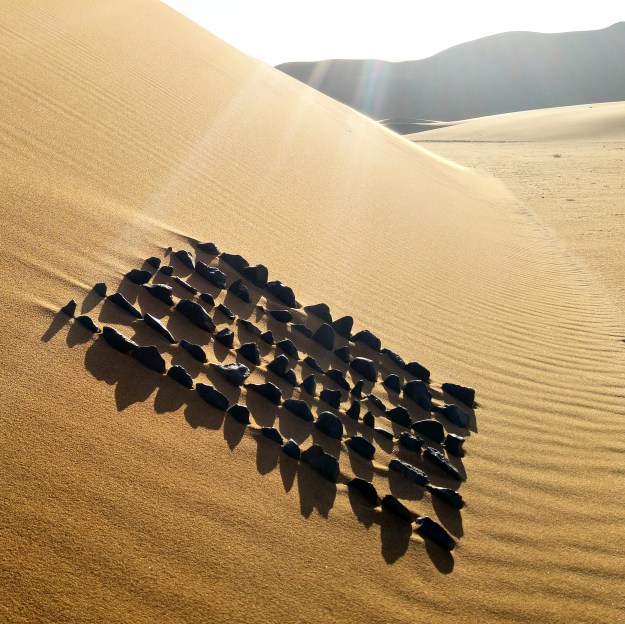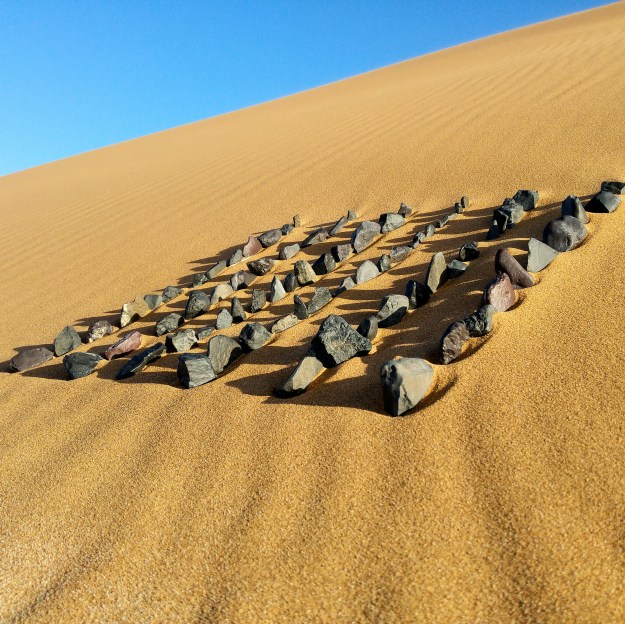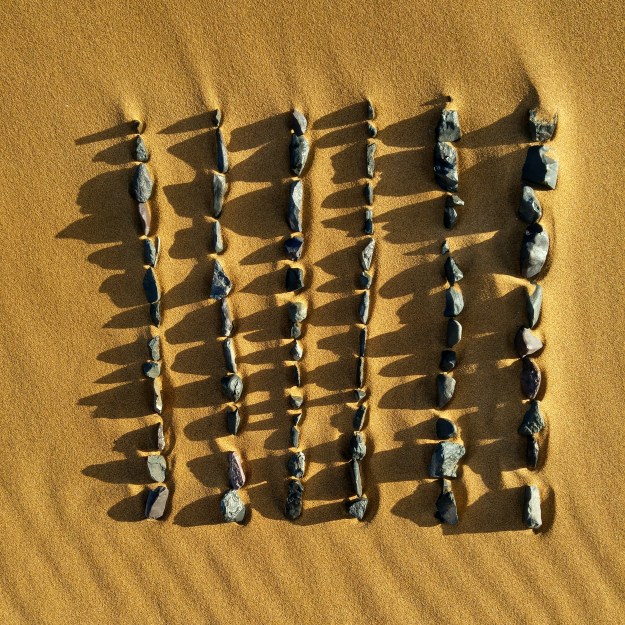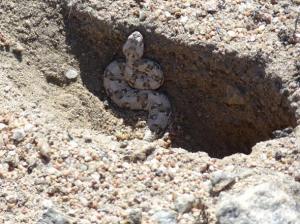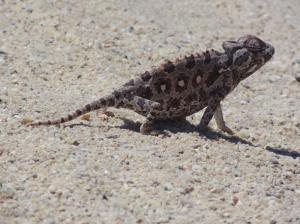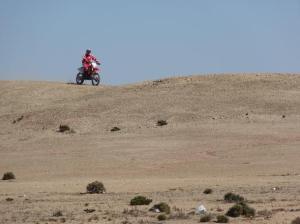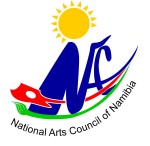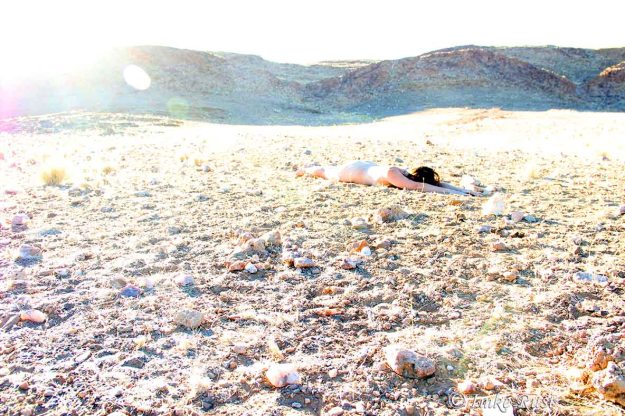
‘I am Desert I’ by Imke Rust (Photography, Digital print on Alu-Dibond)
There is a blurring, hot tension in the air. Even though I am not there, I am so familiar with this situation that my body physically reacts to it every time I think about it or remember the many years of experiencing this same intense and ominous collective fear of an upcoming drought.
I feel how this fear increases with every day in which the sun burns from the bluest skies with no cloud in sight. I feel the heat and the dust and the lack.
The lack of everything…
lack of aliveness and lack of hope.
I can taste the dryness.
But mostly I feel the silent terror and doom hanging in the air like an invisible monster.
I have experienced the impact of a serious drought. And I have experienced the fear oozing out of every wretched discussion, which repeatedly circled around the drought and the rain like a starving dog tied to a tree sniffing some fresh meat in the distance.
The elderly compared and remembered the many droughts they have experienced and seemed to revel in reciting their horrors. The younger, who could not rely on memories that much, were more likely to speculate according to the weather forecasts, the dreaded El-Niño phenomena or any other scientific statistics or findings. I remember these discussions as mostly negative, fearful and resigned, sometimes angry and usually interrupted only with long heavy pauses, knowing glances and deep sighs. For one or other reason, everybody seemed to know that we would be doomed with another great drought, as if by stating the worst that can happen, we are bracing ourselves for it. The few hopeful voices in between quickly got lost or talked into submission.
This fear and the helplessness have crept into my bones. As a child I listened to all these discussions in the hope that somewhere some one would have a solution or know for sure what is going to happen. Will it rain?
Hoping to find somebody who could say: it is going to be okay, even if it doesn’t. Even as a child I knew, that no matter what people said, the rains are not always forthcoming, that is just part of living in a desert country. So I hoped to find some way of creating hope and faith that the natural order of things are okay…
The older I became, the more resigned I became. I had accumulated more experience with dry years, with droughts and the impact it had on our life.
Yes, I fear the droughts. Deeply. But I came to fear one thing even more: the continuous doom saying and negative speculating that happens throughout the year, but increasingly in the rainy-season, when this seems to be the only topic on everybody’s minds. And the feeling of helplessness.
Sure, when the rains come and when they are good, we all are grateful for a moment, only to easily and quickly forget our moaning and return to life as we know and want it.
When the rains do not come, or let us wait too long, we are spiralling down into an ever darker abyss of fear, lack and death. I came to think of this as natural, but when I became more aware of physically experiencing the discomfort of cringing cells in my body whenever I think about this, I started to question what is happening. Even more so, when I realised that even far away from home, in Germany, I am not immune to this.
What is natural is that we are living in a very dry country – in Namibia, named after one of the oldest deserts, with unpredictable and variable rainfall. What (according to me) is not natural is how we deal with it.
I understand the fear, because I feel it too. But I refuse to believe that this deep fear and immense sense of being helpless at the hands of the weather is necessary, natural or useful. I also feel that the relentless doom-mongering and negativity is the worst way of expressing this fear or avoiding the situation.
This constant distress is killing our souls and we have let the drought creep into our hearts and veins.
I started thinking about the ancient San people in Namibia and then also about so many different ancient cultures, maybe the most well-known being the American Indians. All people throughout history were exposed to the unpredictability of the weather and to extreme conditions, droughts, floods, raging storms and endless freezing winters. Maybe it is idealistic of me to assume that the people long ago had a better relationship to the woes of the climate and nature, but from the stories that we have from that time, I am sure they knew something, which we have lost.
I guess the core difference is that they lived with deep respect and reverence towards nature and understood the importance of a healthy give-and-take relationship with everything around them. They understood themselves as a small part or children of this much larger Mother Earth.
We on the other hand have come to view ourselves as masters of the earth. We believe it is our birth-right to exploit any natural resources, to take without giving and separate and put us above the rest of nature.
We have made man the centre of the universe and profit our highest and only purpose.
Every time a drought looms, we are uncomfortably reminded, that we are not the masters of this universe. Our presumed intelligence, scientific and technological advancements and our arrogance all are futile, when the environment stops supporting us. When earth stops to produce new resources. When earth dries up and shrivels under our endless and greedy exploitation.
We are at the mercy of a benevolent environment and we are part of everything that happens. The old people understood that, we don’t.
With every drought we get angrier and more fearful. People like farmers who live closer to nature feel it first and the most intense, while others can ignore it for longer, as they have already distanced themselves so much from nature. Their money can still buy food, when the animals and plants on the farm already starve, but eventually their money also will have nothing left to buy.
What if we all would be willing and open to rethink the possibility living more in tune with nature again? Before nature forces us to. What if we would stop investing our energy in complaining and doomsaying and instead find better ways of prepare and deal with reality?

‘I am desert’ by Imke Rust
Photography, Digital print on Alu-Dibond
I refuse to believe that we are separate or above nature. And I refuse to believe that we are powerless. Not only should we honour and respect mother earth, but we should accept the responsibility that comes with it. If we understand that we are but a small part of the whole, yet we are an important and powerful part.
If we would see us as the hand of a person, we would understand that the hand is subjected to what the body does, but at the same time, it also has an important purpose and function. It is powerful in its own right, but not of its own. It needs the body. And the body needs the hand. The hand cannot complain that it is starving, if it refuses to act in its power and pick the fruit and bring it to the mouth.
My research and exploration into old rainmaking traditions have shown me, that we have the answers and the power of our destiny within us. Yes, there are forces larger than us, but we are part of those, and thus we also can have an impact.
Rainmaking has become synonymous to me with actively co-creating our reality, to become conscious of our part in this grand oneness and act accordingly.
We can choose how we want to act out this role. We might not be able to change Namibia into a rainforest, but we can learn to accept that we are living in an arid country, we can take responsibility for living within the means of what is available and the courage to act as blessings to our surroundings.
We can honour and respect what we have, and express our joy and gratitude in a thousand ways.
We can use our power to change our ways and find ways to better serve our earth-body.
Yes, I believe we can make rain and we should!
Is it easy? No, but it is definitely more constructive and fun, than being prophets of misfortune and disaster and clinging to our fears.
Do you fear being at the receiving end of the weather and climate around you? In what ways do you deal with that fear? And what is your solution? Do you save water? Have you ever performed a raindance? Or have you consciously prayed for rain? I would love to hear your thoughts and ideas!
If you want to read more about my thoughts and actions on rainmaking, please click HERE to see a list of all blog posts on this subject.
( I started writing this as a short introduction to one of my rainmaking experiments which I wanted to share with you, but then it turned out to be a loooooong introduction and I decided to rather let you digest this first, and share the experiment with you in the next post.)
